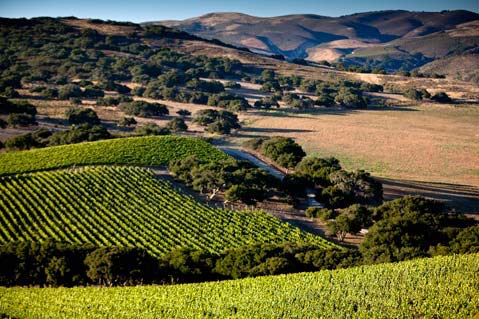Wine and the Weather
How Will a Changing Climate Affect Santa Barbara's Wine Country?

For Santa Barbara County agriculture, the effects of climate change will be as varied as the microclimates in which crops grow. But even in the birthplace of the environmental movement, climate change has something of a Santa Claus quality: Do you believe? Among the 97 percent of scientists who answer in the affirmative are those at UCSB’s Bren School of Environmental Science, as well as the authors of several studies that came out near the Bonn climate talks, including the latest U.S. National Climate Assessment.
In Bonn last week, even Germany’s Angela Merkel admitted her environmentally progressive country would fall short of its emissions goals for 2020. The week before, the Global Carbon Project released projections showing China, which emitted nearly a third of the world’s global carbon dioxide in 2016, was reversing previous years’ decreases and was on track for a 3.5 percent increase in 2017. Other developing nations’ increased emissions are offsetting those of the countries, including the U.S., that are reducing theirs. These facts make the likelihood of glacier-melting temperature increases just about inevitable by century’s end.
Lee Hannah, a senior fellow at Conservation International and an adjunct faculty member at the Bren School, has been modeling climate impacts on species, including grape varietals. Explaining briefly how the process would work in Santa Barbara’s microclimates, Hannah said greenhouse gas pollution that traps heat in the atmosphere “accelerates the hydrological cycle, leading to greater extremes in precipitation along with warmer temperatures. Along the coast these changes are amplified because oceans warm more slowly than land.” Further, “interior warming creates a temperature differential between ocean and land, and that means winds. Those winds will drive more coastal upwelling, creating more fog.”
One of Hannah’s specialties is vineyards; the wine industry produced $1.7 billion in 2016 in Santa Barbara County, according to the area vintners association. “Depending on where a vineyard is, it may see warming, it may see more fog, and it may see increases in extremes both in temperature and in moisture,” said Hannah. “Inland areas would likely get warmer, and growers there will need to think about how to shade grape clusters or use water more efficiently. Coastal areas may see more fog and increasing winds, so these vineyards will have to think about what that means for ripening and harvest times.” He observed, “The future will favor those who are prepared for change.”
At the Bonn climate talks, it was Governor Jerry Brown and former New York City mayor Michael Bloomberg who took on the job of representing the climate-concerned portion of the United States and the Trump administration that talked up coal, a notorious emitter of carbon dioxide when burned. Nonetheless, the feds released a Climate Science Special Report in early November that found “no convincing alternative explanations” that humans had contributed “92 percent-123 percent of the observed 1951-2010 change.”
When the special report was due to be released in mid-August, according to the New York Times, speculation was rife whether the current climate change–doubting administration would allow it. Since 2000, the National Climate Assessment has compiled a report in four-year cycles, this year with the combined efforts of 13 federal agencies, led by the National Oceanic and Atmospheric Administration. The first volume of the report saw the official light of day in November; the second volume is due in 2018.
Sarah Anderson, a public policy and environmental politics expert at the Bren School, said, “The release of this report suggests that the federal agencies are able to exercise their discretion and to share their expertise, even when they are overseen by politicians who disagree with their findings. This is exactly what the public and politicians should want from the scientists and professionalized civil servants in their agencies — expertise free from political interference.”
The Climate Science Special Report augments the climate prognostications that have come before and has intriguing chapter titles like “Potential Surprises” and “Extreme Storms.” Whether its findings will be officially heeded is another matter. “Elected officials ultimately decide how to use [federal agency and scientists’] expertise and whether to take policy action,” Anderson said. “So the release doesn’t mean that we’ll see federal action on mitigating greenhouse gas emissions.” The report can be found at science2017.globalchange.gov.


